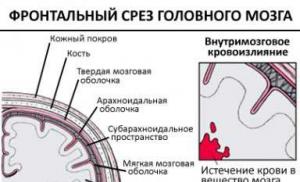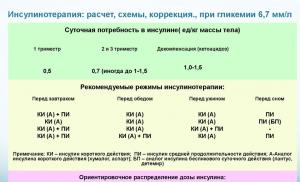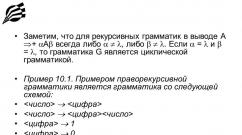Work from the moment applied to the body. Work of external forces applied to an absolutely rigid body
Calculating the sum of the elementary works of two internal forces F 1 J and F 2 J,
we get
F1 J dS1 cos(P1 J ,υ 1 ) + F2 J dS2 cos(P2 J ,υ 2 ) = F1 ′ M1 M1 ′ − F1 M 2 M 2 ′
because Each internal force corresponds to another, equal in magnitude and opposite in direction, then the sum of the elementary works of all internal forces is also zero.
δ A J = ∑ δ A i J = 0
The final movement is a set of elementary changes
tions, therefore AJ = 0, i.e. the sum of the work done by the internal forces of a rigid body during any movement is zero.
2.5.2. Work of external forces applied to a translationally moving body
External and internal forces are applied to each point of the body (Fig. 18). Since the work of internal forces at any displacement is zero, it is necessary to calculate the work of only external forces F 1 E, F 2 E ... F n E. With progressive
motion, the trajectories of all points are identical, and the vectors of elementary displacements are geometrically equal, i.e.
dri = dr = drc .
Elementary work of force F i E
δ A iE = F i E dr c .
Elementary work of all external forces
δ AE = ∑ δ Ai E = ∑ F i E drc = drc ∑ Fi E = R E dr c ,
where R E is the main vector of external forces.
Work on final movement
AE = ∫ R E drc .
The work of forces during the translational movement of a rigid body is equal to the work of the main vector of external forces on the elementary movement of the center of mass.
2.5.3. Work of external forces applied to a rotating body
Let us assume that external forces F 1 E, F 2 E ... F i E ... F n E are applied to a rigid body rotating around a fixed axis Z (Fig. 19).
Let's calculate the work of one force F i E applied to a point M i describing a circle of radius R i. Let us decompose the force F i E into three components directed along the natural axes of the trajectory of the point M i .

E F 1
F ib |
|
F in |
Mi dSi
F iτ
Z M1 (x1 ,y1, z1 )
M2 (x2 ,y2 ,z2 )

With an elementary rotation of the body through an angle d ϕ, the point M i describes the arc dS i = R i d ϕ. During this displacement, the work is done only by the tangential component of the force, and the work of the force components F in E and F ib E perpendicular to the velocity vector is equal to zero.
δ A i E = F i τ E dS i = F i τ E R i d ϕ = M i E τ d ϕ = M iz E d ϕ , because the moments of the normal and binormal components of the force F i E relative to the Z axis are equal to zero
mental work of all forces applied to a solid body
δ AE = ∑ δ Ai E = ∑ M iz E dϕ = dϕ ∑ Miz E = M z E dϕ .
Thus, the elementary work of external forces applied to a rotating rigid body is equal to
δ AE = M z E dϕ .
At the final rotation of the body, the work done by the external force is equal to
AE = ∫ M z E dϕ .
If the main moment of external forces M z E = const, then the work of external forces on a final displacement is equal to A = M z E (ϕ 2 − ϕ 1).
The work during rotational motion of a rigid body is equal to the work of the main moment of external forces relative to the axis of rotation on an elementary angular displacement.
2.6. Work of gravity
Let a point of mass m move under the influence of gravity from position M 1 (x 1, y 1, z 1) to position M 2 (x 2, y 2, z 2) (Fig. 20).
The elementary work of force is calculated as the scalar product of the force vector F (X,Y,Z) by the elementary displacement vector dr (dx,dy,dz)
δ A = F dr = Xdx + Ydy + Zdz ,
where X,Y,Z are projections of force F,
dx,dy,dz - projections of the displacement vector dr on the x, y, z axes. When moving under the influence of gravity
A= ± mgh.
If the point drops (regardless of the type of trajectory), i.e. z 2< z 1 , работа силы тяжести положительна, если точка поднимается, работа силы тя-

tin is negative. If the point moves horizontally (z 2 = z 1), the work done by gravity is 0.
3. THEOREM ABOUT CHANGE OF KINETIC ENERGY
Let us consider a material point M with mass m, moving under the action
force |
|||||||||||||
F 2 ... F n (Fig. 21) with speed υ |
The modulus of which is equal to |
||||||||||||
υ = dS, where S is the arc coordinate. |
|||||||||||||
The projection of acceleration onto the tangent is equal to a τ = |
|||||||||||||
Considering that the speed υ |
A complex function of time, i.e. υ = f(S(t)), |
||||||||||||
a τ = d υ |
Dυ |
= υ d υ . |
|||||||||||
The basic equation of dynamics in projection onto the tangent has the form |
|||||||||||||
maτ = ∑ Fi τ |
|||||||||||||
υd υ |
= ∑ F i τ . |
||||||||||||
Let's multiply both sides of the equation by dS and integrate both sides of the equality within the limits corresponding to the initial and final positions
points M 1 |
and M2 |
|||||||||||||
mυ dυ = dS∑ Fi τ |
||||||||||||||
m ∫ υ d υ = ∑ ∫ F i τ dS , whence |
||||||||||||||
mυ 2 |
||||||||||||||
= ∑ A i . |
||||||||||||||
mυ 2 |
Half the product of the mass of a material point and the square of the velocity |
|||||||||||||
is called the kinetic energy of a point. |
||||||||||||||
mυ 2 2 |
||||||||||||||
− kinetic energy of the point after moving, |
||||||||||||||
− kinetic energy of a point before moving, |
||||||||||||||
mυ 2 |
||||||||||||||
V i 2
|
The work of forces is calculated using the formulas obtained in § 87 and 88. Let us additionally consider the following cases. 1. The work of gravity forces acting on the system. The work of gravity acting on a particle with weight will be equal to where are the coordinates that determine the initial and final positions of the particle (see § 88). Then, taking into account that (see § 32), we find for the sum of the work of all gravity forces acting on the system, the value This result can also be represented in the form where P is the weight of the system, is the vertical movement of the center of mass (or center of gravity). Consequently, the work of gravity forces acting on the system is calculated as the work of their main vector (in the case of a rigid body, the resultant) P on the displacement of the center of mass of the system (or the center of gravity of the body). 2. Work of forces applied to a rotating body. The elementary work of the force F applied to the body (Fig. 307) will be equal to (see § 87) since , where is the elementary angle of rotation of the body. But, as is easy to see, We will call the quantity torque. Then we get
Consequently, in the case under consideration, the elementary work is equal to the product of the torque and the elementary angle of rotation. Formula (46) is also valid under the action of several forces, if we assume When turning to the final angle, work
and in the case of a constant moment If a body is acted upon by a pair of forces lying in a plane perpendicular to the Oz axis, then in formulas (46)-(47) it will obviously mean the moment of this pair. Let us also indicate how power is determined in this case (see § 87). Using equality (46), we find Consequently, when forces act on a rotating body, the power is equal to the product of the torque and the angular velocity of the body. At the same power, the greater the torque, the lower the angular velocity.
3. The work of friction forces acting on a rolling body. A wheel of radius R (Fig. 308), rolling along a certain plane (surface) without sliding, is acted upon by a friction force applied at point B, which prevents the point from sliding along the plane. The elementary work of this force. But point B in this case coincides with the instantaneous center of velocities (see § 56) and Since then for each elementary movement . Consequently, when rolling without sliding, the work done by the frictional force that prevents sliding during any movement of the body is zero. For the same reason, in this case the work of the normal reaction N is also zero, if we consider the bodies to be non-deformable due to the force N applied at point B (as in Fig. 308, a). The work done by the internal forces on the final displacement is zero. The work done by a force acting on a translationally moving body is equal to the product of this force and the increment of linear displacement. The work done by a force acting on a rotating body is equal to the product of the moment of this force relative to the axis of rotation and the increment in the angle of rotation: ; . Power: Kinetic energy of a mechanical system during various types of motion. Kinetic energy of a mechanical system- a scalar equal to the sum of the kinetic energies of all points of the system: During forward movement: During rotational movement: For plane-parallel motion: , where d is the distance from the center of mass to the MCS 27. Theorem on the change in the kinetic energy of a material point. Kinetic energy of a material point- a scalar equal to half the product of the mass of a point and the square of its speed. Basic equation of dynamics: Theorem: the change in the kinetic energy of a material point at a certain displacement is equal to the work of the force acting on the point at the same displacement. Theorem on the change in kinetic energy of a mechanical system. Since the work done by internal forces is zero, then: Theorem: the change in the kinetic energy of a mechanical system at a final displacement is equal to the sum of the work done by external forces at the same displacement. The principle of possible movements for a mechanical system.
The principle of possible movements - Lagrange's principle- for the equilibrium of a mechanical system with two-way, stationary, holonomic and ideal constraints, it is necessary and sufficient that the algebraic sum of the work done by the given forces on a possible displacement is equal to zero. D'Alembert's principle for a material point.
The geometric sum of all forces and inertia forces applied to a moving material point of this point is equal to zero D'Alembert's principle for a constrained mechanical system.
In a moving non-free mechanical system, for each material point at any moment in time, the geometric sum of the specified forces applied to it, coupling reactions and inertial forces is equal to zero. Multiplying both sides of the expression by r i we get: ;
Reducing the inertia forces of points of a rigid body to the simplest form. To the system of inertia forces of points of a rigid body, you can apply the Punchon method, considered in statics. Then any system of inertia forces can be reduced to the main vector of inertia forces and the main moment of inertia forces. In translational motion: Ф = -ma (in translational motion of a rigid body, the inertial forces of its points are reduced to the main vector of inertial forces equal in magnitude to the product of the mass of the body, multiplied by the acceleration of the center of mass applied at this center and directed towards the opposite acceleration of the center of mass). In rotational motion: M = -Iε (in the rotational motion of a rigid body, the inertia forces of its points are reduced to the main moment of inertia forces equal to the product of the moment of inertia of the body relative to the rotational forces and the angular acceleration. This moment is directed in the direction opposite to the angular acceleration). In plane motion: Ф = -ma М = -Iε (in plane motion of a rigid body, the inertia forces of its points are reduced to the main vector and the main moment of inertia forces). General equation of dynamics. D'Alembert-Lagrange principle. D'Alembert's principle: å(P i + R i + Ф i) = 0; å(P i + R i + Ф i)Dr i = 0, we assume. that the connections imposed on the mechanical system are bilateral, stationary, holonomic and ideal, then: å(R i × Dr i) = 0; å(P i + Ф i)Dr i = 0 - general equation of dynamics- for the movement of a mechanical system with two-way, stationary, holonomic and ideal connections, the sum of the work done by the specified forces and the inertia forces of the points of the system at any possible movement is zero. Practical work on the topic: “Work and power during rotational motion” Goal of the work: securestudy material on the topic, learn to solve problems. Progress: Study material on the topic. Write down a short theory. Solve problems. Apply for work. Answer security questions. Write a conclusion. Brief theory: Work done by a constant force applied to a rotating body Let's imagine a disk rotating around a fixed axis under the influence of a constant forceF (Fig. 6) , the application point of which moves with the disk. Let's break down the powerF into three mutually perpendicular components:F 1 – circumferential force,F 2 – axial force,F 3 – radial force. When rotating the disk through an infinitesimal angledφ forceF will perform elementary work, which, based on the resultant work theorem, will be equal to the sum of the work of the components. It is obvious that the work of the componentsF 2 AndF 3 will be equal to zero, since the vectors of these forces are perpendicular to the infinitesimal displacementds application pointsM , therefore the elementary work of forceF equal to the work of its componentF 1 : dW = F 1 ds = F 1 Rdφ . When turning the disk to its final angleφ work of forceF equal to W = ∫ F 1 Rdφ = F 1 R ∫ dφ = F 1 Rφ , where is the angleφ expressed in radians. Since the moments of the componentsF 2 AndF 3 relative to the axisz are equal to zero, then based on moment of powerF relative to the axisz equal to: M z (F) = F 1 R . The moment of force applied to the disk relative to the axis of rotation is called torque, and, according to the standardISO , denoted by the letterT : T = M z (F) , hence,W = Tφ . The work done by a constant force applied to a rotating body is equal to the product of torque and angular displacement . Example of problem solution Task:
a worker rotates the winch handle by forceF
= 200 N
, perpendicular to the radius of rotation. Solution.
φ = ωt = (π/3)×25 = 26.18 rad. W = Tφ = Frφ = 200×0.4×26.18 ≈ 2100 J ≈ 2.1 kJ . The power of the force applied to a uniformly rotating body is equal to the product of the torque and the angular velocity . If work is done by a force applied to a uniformly rotating body, then the power in this case can be determined by the formula: P = W/t = Tφ/t orP = Tω . Option #1 Two lead balls of masses 0.5 and 1 kg are suspended on two cords of equal length equal to 0.8 m. The balls are in contact with each other. The ball of smaller mass was moved to the side so that the cord was deflected at an angle α = 60°, and released. To what height will both balls rise after the collision? The impact is considered central and inelastic. Determine the energy expended on the deformation of the balls upon impact. A flywheel with a mass of 4 kg rotates freely around a horizontal axis passing through its center with a frequency of 720 rpm. The mass of the flywheel can be considered distributed along its rim with a radius of 40 cm. After 30 s, under the influence of the braking torque, the flywheel stopped. Find the braking torque and the number of revolutions that the flywheel makes until it comes to a complete stop. A body of mass m=1.0 kg falls from a height h=20 m. Neglecting air resistance, find the average power developed by gravity along the path h, and the instantaneous power at a height h/2. Option No. 2 The flywheel rotates according to the law expressed by the equation, where A = 2 rad, B = 32 rad/s, C = -4 rad/s2. Find average powerN, developed by the forces acting on the flywheel during its rotation, until it stops, if the moment of inertia I = 100 kg m 2 . A body of mass m rotates on a horizontal surface in a circle of radius r=100mm. Find the work done by the friction force when the body rotates through an angle α=30. The coefficient of friction between the body and the surface is k=0.2. The first ball with mass m1 = 2 kg moves with a speed of v1 = 3 m/s. The second ball with mass m2 = 8 kg moves with a speed of v2 = 1 m/s. Find speedv 1 first ball and speedv 2 the second ball immediately after impact, if: a) the balls are moving towards each other; b) the first ball catches up with the second. The impact is considered central and absolutely elastic. The work done by a force on an infinitesimal displacement, called elementary work, is expressed by the formula where is the angle between the force F and the speed v of the point of its application (Fig. 171), or in the form of a scalar product: where is the differential of the radius vector of the point of application of the force. Expressing this scalar product through the projections of the vectors F and onto the coordinate axes, we obtain an analytical expression for the elementary work: where X, Y, Z are projections of force onto the coordinate axes, and are infinitesimal changes (differentials) in the coordinates of the point of application of force during an elementary movement of this point.
If a force F is applied to a rigid body rotating around a fixed axis z, then
where is the elementary angle of rotation of the body around its axis. If a pair of forces with a moment is applied to a body having a fixed axis of rotation, then the elementary work of this pair is expressed as follows:
where is the projection of the vector - the moment of the pair onto the axis. Of particular interest is the case when the force is a function of the coordinates of the point and, in addition, In this case, there is a coordinate function whose partial derivatives with respect to coordinates are equal to the projections of the force onto the corresponding coordinate axes, i.e. Such a function is called a force, or potential, function. Thus, if there is a force function, then i.e., the elementary work of force is equal to the total differential of the force function. A limited or unlimited part of space where the action of a force that has a force function manifests itself is called a force potential field. The geometric location of the points of the force potential field at which the force function maintains a constant value is called the equipotential surface, or level surface. The work A of force F on a final path is defined as the limit of the sum of elementary works and is expressed in the form of a curvilinear integral taken along the arc of the trajectory from point to point M: If the product a is expressed by a known function of the arc coordinate s of the point of application of the force, then the variable of integration is this quantity s and the formula for calculating the work takes the form
where are the values of the arc coordinate corresponding to the positions and M of the point of application of the force, is the projection of the force onto the tangent to the trajectory of this point. If a force with a constant modulus forms a constant angle with the straight line along which its point of application moves, then
In the particular case, when point M moves in a straight line under the action of a constant force F, directed along the same straight line in the direction of movement or against movement, then, accordingly, we have: where is the path traveled by the point. If, during the rotational motion of a rigid body around a fixed axis, the moment of force applied to it is a function of the angle of rotation of the body, i.e.
The work of a pair of forces is determined similarly:
The work of a force having a potential function on a final displacement is expressed by the difference in the values of this function at the final and initial points of the path:
i.e. in this case, the work of the force does not depend on the curve along which point M moves, but depends only on its initial and final positions. When studying the motion of a material point in a potential force field, the concept of potential energy is very important. The potential energy of a material point is a special type of energy possessed by a point located in a force potential field. Potential energy P is equal to the work that the field force would do when moving the point of its application from a given position M(x, y, z) to a position taken as zero, i.e.
The work done by a force on a final path through potential energy is expressed as follows:
If several forces act on a point, then the work done by the resultant of these forces on any path is equal to the sum of the work done by the component forces on the same path. In the technical system of units, work is measured in kilogram meters. In the International System of Units, the unit of work is 1 joule. Power N characterizes the speed with which work is performed, and in the general case is defined as the derivative of work with respect to time: i.e. power is equal to the scalar product of the force vector and the velocity vector. If work A is performed uniformly, then power is determined as follows: where is the time during which the work was performed. Thus, in this particular case, power is numerically equal to the work produced per unit of time. During rotational motion of a rigid body around a fixed axis: where is the main moment of forces applied to the body relative to the axis of rotation, and is the angular velocity of the body. In the technical system of units, power is measured in horsepower, and In the International System of Units, the unit of power is When solving problems of calculating work and power, efficiency is often used. Efficiency is the ratio of useful work or power to the work or power of the driving forces:
Since due to harmful resistances, then. When calculating work, the following cases must be distinguished. 1. Rectilinear motion under the action of a constant force in magnitude and direction; in problems of this type, formulas (169) and (170) are used (problems 756, 762). 2. Rectilinear motion under the influence of a force, the projection of which onto the direction of a rectilinear trajectory is a function of the distance of the point from some fixed center on this line (problem No. 768); in problems of this type, formula (167) is used, which, if the axis is directed along the trajectory of the point, takes the form
3. Curvilinear motion under the influence of a constant force in magnitude and direction; in this case, formula (167) can be used. 4. Curvilinear movement under the influence of a force, which is a function of the coordinates of the point of application of the force. Here, the definition of work is reduced to calculating the curvilinear integral using formula (167). If in the case under consideration there is a force function, then the work is determined by formula (173) or (176). 5. Rotational motion of a rigid body under the action of a constant torque or a torque that is a function of the angle of rotation of the body; in this case, formula (171) is used to calculate the work. To calculate power depending on the nature of the movement, we use formula (177) for rectilinear or curvilinear movement of the point of application of force (problems 760, 764), or formula (179) in the case of rotational motion of a rigid body (problems 771, 772, 765). The average power can be determined using formula (178). Example 131. A constant force acts along the rod, with the help of which the trailer is pulled along a horizontal track (Fig. 172). The thrust forms an angle with the horizon. Determine the work done by force F on the path.
Solution. Here the work is determined by formula (169): Example 132. A body with a weight is moved along a horizontal floor using a horizontal force over a distance. Determine the work that the friction force will do if the coefficient of friction between the surface of the body and the floor is . Solution. According to Coulomb's law, the friction force is , where N is the normal pressure of the body on the floor surface, and in this case . Since the friction force is directed in the direction opposite to the movement, the work done by this force is negative: Example 133. Find the work done by gravity when moving a material point from position to position M (x, y, z), and also calculate the potential energy of the point in position M (Fig. 173). Solution. Directing the z axis vertically upward, we have: where is body weight. Therefore, according to formula (162)
that is, the work of gravity is equal to the product of the weight of a material point and the difference in its heights in the initial and final positions, and these heights are measured from an arbitrarily chosen horizontal plane. Let's determine the potential energy of a point based on formula (175):
where C is an arbitrary integration constant. Example 134. Determine the work done by the elastic force of a stretched rod, to the end of which a load M is suspended, when this load moves from position to position M, if the length of the undeformed rod is equal to, also calculate the potential energy of the point in position M (Fig. 174).
Solution. Denoting the elastic force F and directing the x axis vertically downward, we have: where x is the elongation of the rod, c is its rigidity. Hence,
Example 135. A force acts on a material point, the projections of which on the coordinate axes are expressed as follows: Determine the work done by this force when moving a point from position to position if the force is expressed in n and the coordinates are in cm. Solution. First of all, let’s find out whether a force function exists in this case: to do this, we find the partial derivatives:
From here we get that
i.e., conditions (164) are satisfied, and the force function exists. The total differential of this function is equal to the elementary work, i.e. We find the elementary work using the formula or by substituting the values: This expression is indeed a total differential The values of the function at points and M are equal: Therefore, the required work is equal to Example 136. Determine the work of the central force, the modulus of which is a function of the distance of the material point from the center of this force, i.e. (Fig. 175). Solution. In this case, the unit force vector is equal to Moreover, the sign is chosen depending on whether point M is repelled from the center of force or attracted to it. Thus, the force vector F will be expressed as follows:
Hence, using formula (161), we have:
Hence,
i.e., the elementary work is a total differential and, therefore, there is a force function, and
So, in this case, we have a general formula by which we can immediately determine the force function depending on the radius vector of the point of application of the force, and then calculate the work of the force when moving this point from position to position
Example 137. One end of the spring is hinged at point O, and a ball is attached to the other end. The length of the unstretched spring is , stiffness . The ball is moved from position to position, and the spring is stretched and does not bend. Determine the work done by the elastic force of the spring if Solution. The elastic modulus of the spring force in this case is expressed as follows. | ||



 .
. .
.

 , multiply by the elementary displacement:
, multiply by the elementary displacement:  ; ;
; ;  . Integrating the resulting expression:
. Integrating the resulting expression: .
. ; , let the connections imposed on the points of the mechanical system be bilateral, stationary, holonomic and ideal, then: .
; , let the connections imposed on the points of the mechanical system be bilateral, stationary, holonomic and ideal, then: .

 .
. , the sum of the moments of the specified forces, coupling reactions and inertial forces relative to the coordinate axes is zero.
, the sum of the moments of the specified forces, coupling reactions and inertial forces relative to the coordinate axes is zero.
 (168)
(168)




 (182)
(182)
















